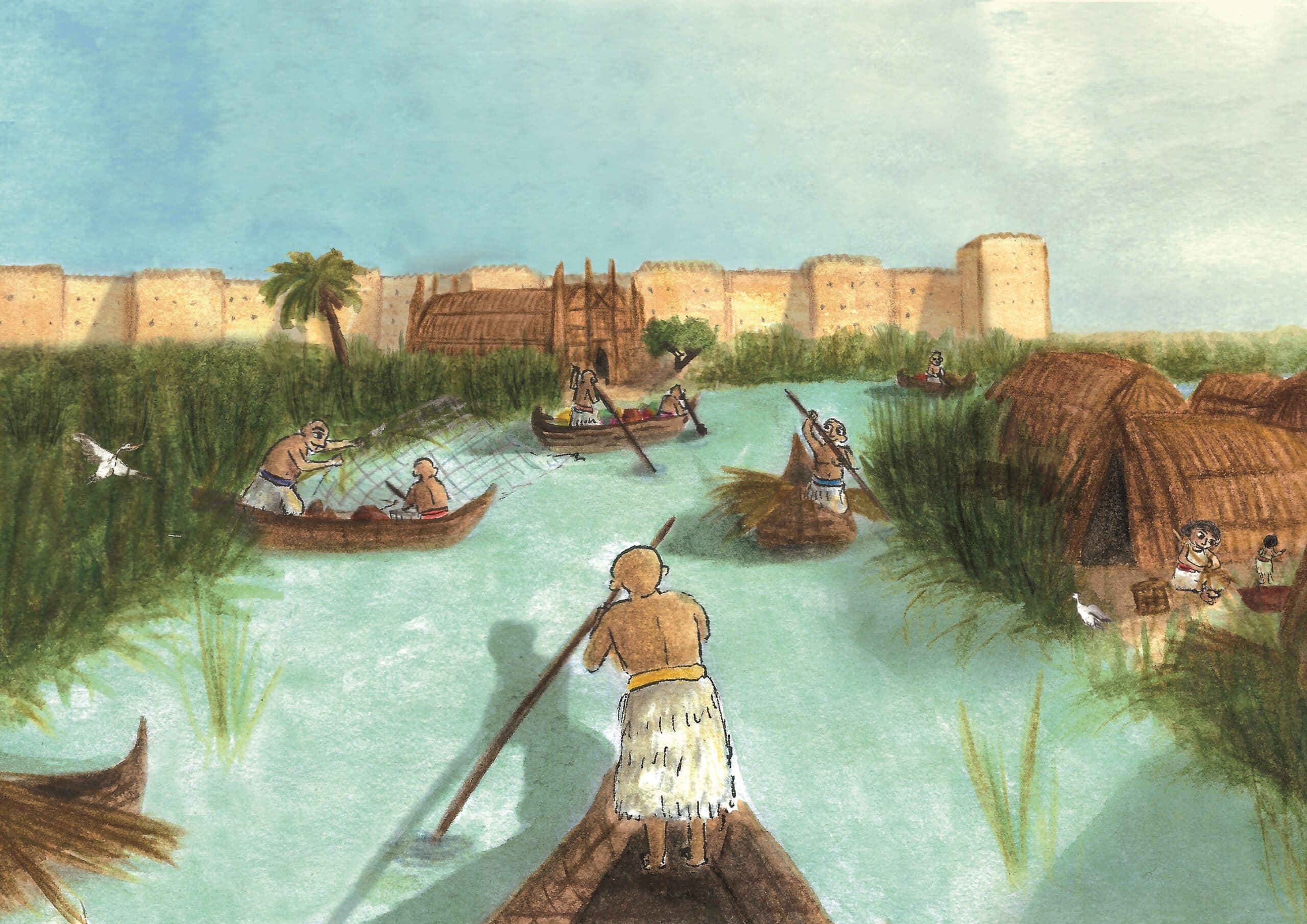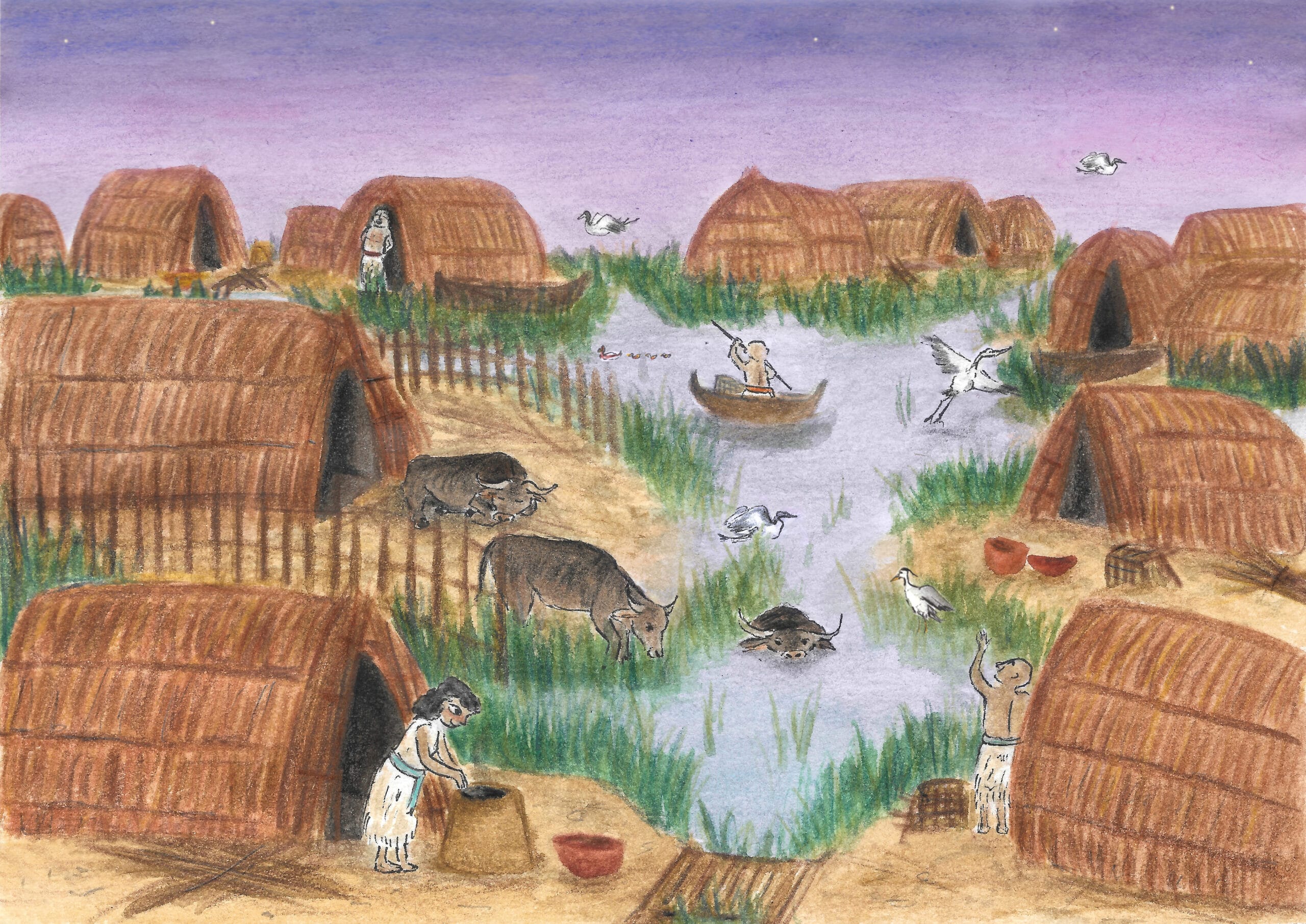Between the rivers, Sumerian natural landscape is mostly marshes, more and more dense as you go down in the south, into the delta.
Sumerian shores are nothing like dreamy sandy beaches with palm trees: both rivers join to form a vast marshland, where salty and fresh waters mix, where water level depends on both the tide and the floods. The marshes are a horizon of huge reeds (7-8 meters high), a mesmerising water maze full of life. Transition between the ‘marshscape’ and the sea is both abrupt and gentle. Coming from the marshes, reeds are slowly fading out of view while the horizon gradually widens up to water and sky.

There are two main harbours on Sumerian shores: Ur and Lagaš.
Both cities often compete with each other, even fight. Right now, Ur is the most powerful one (but still reckons Lagaš as the second most important city in Sumer), so that Ur also is the booming harbour of Sumer, while Lagaš harbour is a bit less busy. As a consequence, marshes are denser around Lagaš, and people started to build small huts here and there to settle down in the shadow of the huge city. By contrast, people no longer live in the marshes around Ur, because their area has drastically shrunk to build more embankments or warehouses, and to enlarge the channels that lead to the city to allow the passage of more bigger boats.
Journey tip - The best place to explore the marshes certainly is Eridu: there is a village close to the city where visitors are most welcome. It is like a little paradise on earth, and indeed the marshland is close to the idea of a Sumerian paradise. It is nowadays far from what the old Eridish remember because a large area of the marshes was dried out, both because of the changing course of the Euphrates, and the policy of the new central government from Ur.

Inland, more marshes surround the riverbeds and their multiple branches. Small lagoons and pools, fields of reeds along a narrow branch of the rivers: busy places but not large enough for villagers to settle in. They are not as dense as they used to be, mostly because the level of sea water slowly decreases, so that seashore is further south than it used to be. There still are some marshes around the city of Uruk, but probably nothing like it was in the past: it is said that Uruk was built in the middle of the marshes… just after the Flood (the big event not the seasonal ones).
